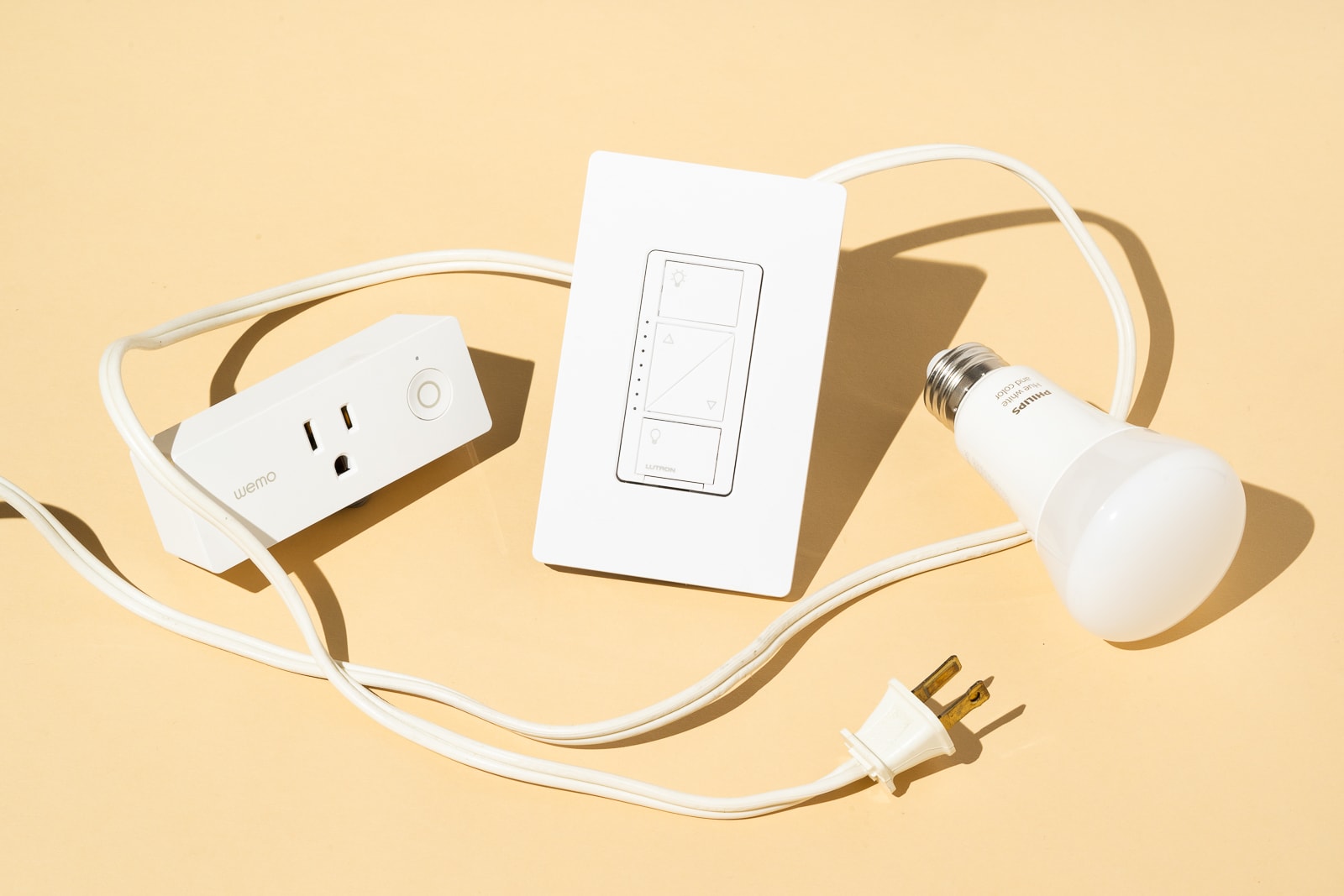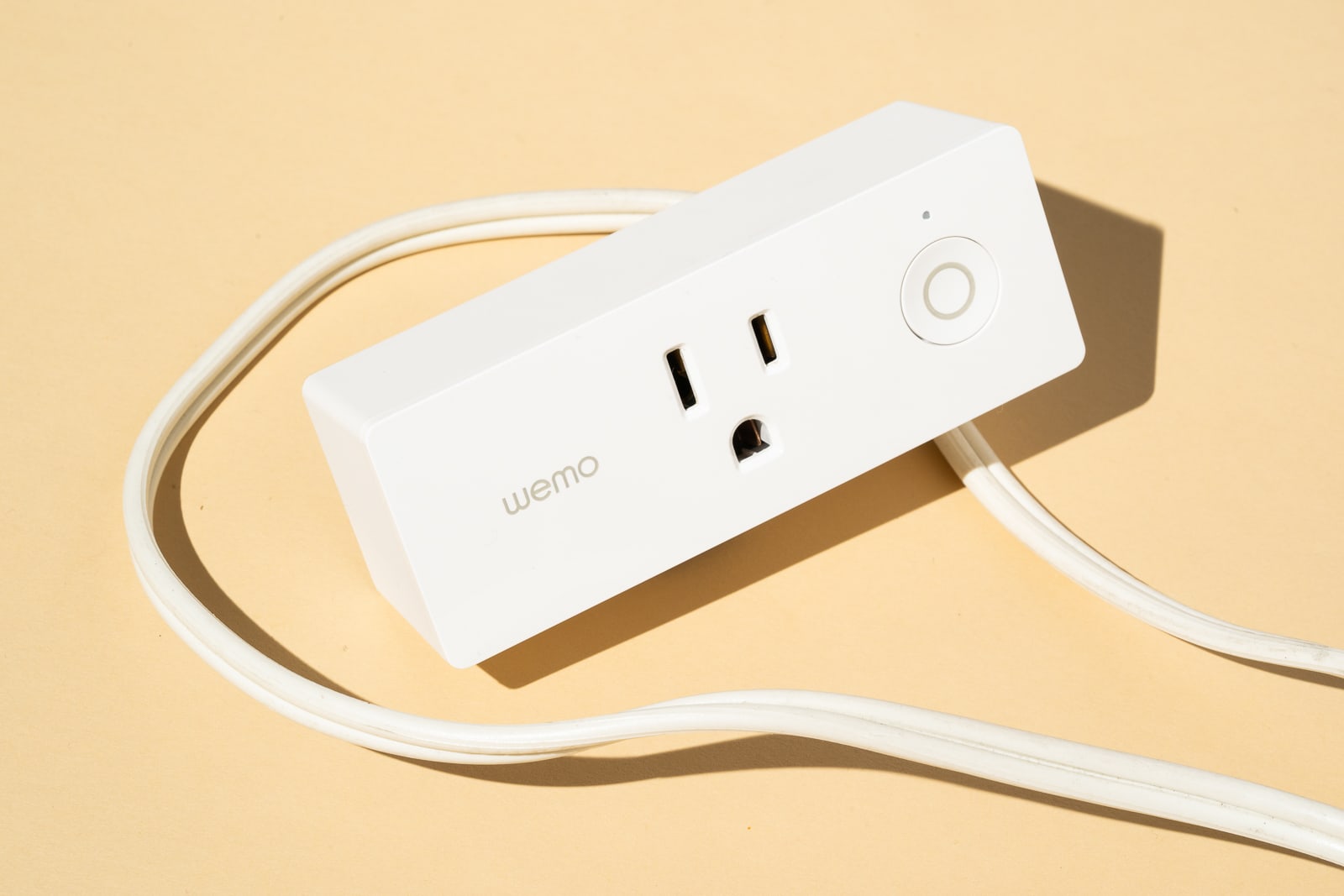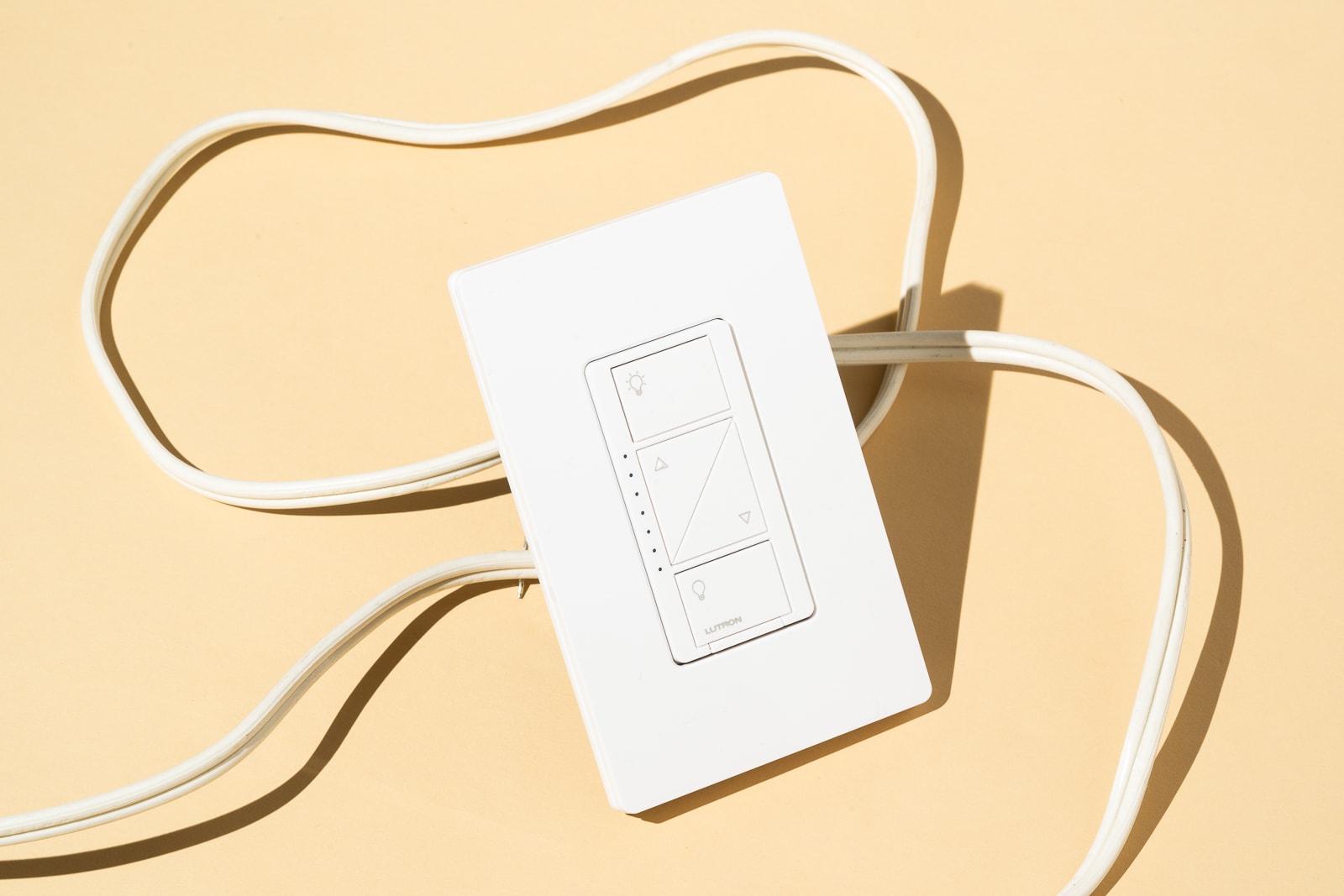
By Rachel Cericola
This post was done in partnership with Wirecutter. When readers choose to buy Wirecutter's independently chosen editorial picks, Wirecutter and Engadget may earn affiliate commission. Read the full blog seeing the light: when to use a smart bulb, switch, or plug.
I'm not sure if it's because I've captured a lot of critters on home security cameras or seen one too many horror movies, but entering a dark house terrifies me. Although my husband would be perfectly happy to solve this problem by leaving the lights on all day and night, it's completely unnecessary: Smart lighting exists for precisely this purpose.
Setting up your home with smart lights can solve a lot of problems. However, because there are several types of devices you can pick from—bulbs, light switches, and add-on plugs—it can be hard to know where to start. Why and when do you pick one of those devices over another?
All smart lighting devices allow you to control them from your smartphone, and you can set them up to work like old-fashioned lighting timers, but they can do much more. You can control whole groups of lights at once, set them to go on and off based on local sunset times, and configure them to respond to other smart devices, such as motion sensors or security cameras. But each type of device has a superpower (and also a weakness, just like Superman). Let's look at what devices work best for three different scenarios.
When to use a smart plug
Smart plugs are best when you want to control a lamp. They're small devices that fit into any outlet, and they're the easiest way to convert a table lamp, floor lamp, or night-light into a smart light. They don't need you to have a familiarity with wiring or any electrical know-how, as smart in-wall switches do. Smart plugs are especially easy to set up, remove, and move from room to room—once you plug one in, you simply sync it with your smartphone, and you're off. The only downsides are that they take up some outlet space and don't control hardwired fixtures like ceiling lights or sconces.
I like the Wemo Mini because it's cheap, it works with all of the major smart-home platforms (Alexa, Google Assistant, and HomeKit), and it has been reliably turning my son's night-light on and off for over a year now. If you don't need your plug to work with multiple smart-home platforms, you can find other great smart plugs out there that are even cheaper, such as the Wyze Plug.
One of the great things about smart plugs is that you can use them for other things besides lights. I have an iClever IC-BS06 underneath my house so that I can trigger a pump to clear out water when it starts to flood under there (and that happens often). The iClever plug has an extra outlet, so we can add holiday lights or a giant inflatable Christmas dragon, which we can control through the app as well via voice commands ("Alexa, release the dragon").
When to use a smart bulb
Smart bulbs are best when you want to control bulbs individually or want to adjust the color of your home's light. Since they come in different shapes and sizes, there's a smart bulb for almost any lamp or fixture, indoors and outdoors (so long as your fixture is weather-tight). They screw into a fixture just like any other bulb, but they sync with a smartphone app, which lets you create custom scheduled on/off times or custom Scenes (preset brightness or color settings for different activities that you can trigger instantly). The whole process is easy, and you don't need to do a lick of wiring.
I love the Philips Hue White Ambiance Smart Bulb Starter Kit, which includes four dimmable white bulbs and a hub—a little box you plug in to your home Internet router that allows your bulbs to talk to each other and other devices, and lets you control everything when you aren't home. (You can also use the Amazon Echo Plus or Echo Show, which each have a hub built in). Besides putting the bulbs on a schedule (an easy task), you can dim or tweak the color temperature of the bulbs to suit your preference. Philips also has color-changing bulbs, which add a splash of color to a stale room and work with third-party apps that can alert you to security alarms and weather changes—or just create a disco effect (video). The Philips Hue White and Color Ambiance Starter Kit is pricier than the white-bulb set at a typical price of $200, but it includes four color bulbs and a hub.
If extras don't matter and you're just looking to dabble, the Wyze Bulb (usually about $10) connects right to your home Wi-Fi and lets you turn the white light into a variety of shades on command and schedule on/off times; it also includes Alexa and Google Assistant support. Unlike smart plugs, smart bulbs work only with light fixtures, and those fixtures need to be turned on at all times. If someone flips the switch, you won't be able to access a smart bulb without an add-on like the Lutron Aurora dimmer, which works only with Philips Hue bulbs.
When to use a smart switch
Smart in-wall dimmers and switches are best when you want to control lights operated by a light switch, and they're especially useful for switches that control several lights at once. A smart switch or dimmer is a more permanent way to add smart lighting into your home, but that means they're not good for rentals. They allow you to turn your lights on and off or to dim them, from a single switch or a smartphone app (or by voice, if you have a smart speaker set up for that), but they also enable you to create lighting schedules. And you can install them without having to change your existing fixture or any bulbs. The Lutron Caséta is a favorite because of its reliability, and it works with a huge range of smart-home devices. On a technical note, this switch doesn't need a white "neutral" wire in your wall to be installed, which many other smart switches require (and which is often missing, especially if you live in an older house like I do).
Smart switches are also great for homes with vaulted ceilings or areas with hard-to-reach lighting fixtures. The Lutron model does need a hub, so if you're not interested in adding another box to your home networking setup, or if you just want to replace one or two switches in the house, opt for the Wemo Dimmer instead. Of course, you'll also need some basic knowledge of wiring. If you don't have that, hire an electrician.
This guide may have been updated by Wirecutter. To see the current recommendation, please go here.
When readers choose to buy Wirecutter's independently chosen editorial picks, Wirecutter and Engadget may earn affiliate commissions.
via engadget.com






0 Response to "When to use a smart bulb, switch or plug"
Post a Comment